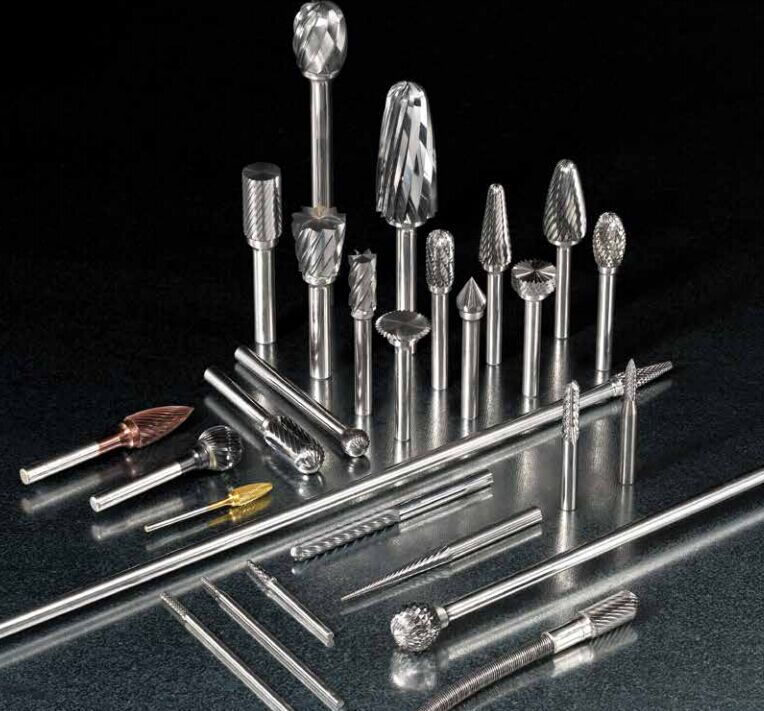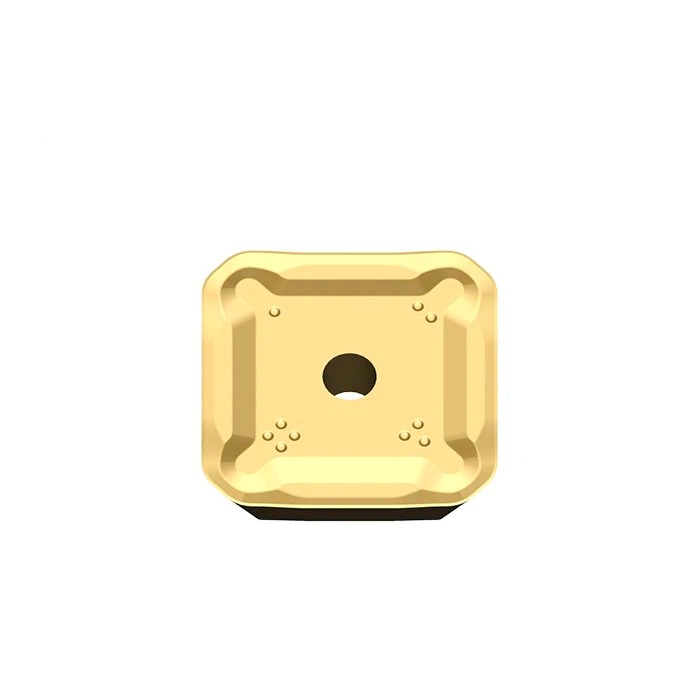In our previous post, we examined hard armor plate ratings, exploring the “levels” of protection offered by body armor plates as defined by the NIJ and other standard-setting organizations. Our aim was to provide a clearer understanding of armor plates within this context. However, as that prior post revealed, these “levels” are arbitrary, with many plates falling below, between, or above them (i.e., every plate with a “plus” in its description. III+, IIIA+, IV+…).
To truly grasp the performance characteristics of an armor plate, simply knowing its assigned level is insufficient. Even a superficial understanding requires some knowledge of the materials used in that plate’s construction. Cnc Milling

With that in mind, let us provide an overview of armor plate materials and their performance characteristics.
Three ceramic materials are commonly employed in hard armor plates: alumina, silicon carbide and boron carbide.
The table below presents the average properties of commercial grades for each material, including AD85 and RBB4C as common variants:
In the table above, “performance” is evaluated on a weight basis. For instance, hot-pressed silicon carbide (SiC) and reaction-bonded boron carbide (RBB4C) demonstrate comparable effectiveness against steel core AP threats when considering equal weights. This means we are comparing an 8mm-thick SiC tile to a ~9.3mm-thick RBB4C tile.
The question of how mechanical properties, such as hardness and compressive strength, translate to ballistic performance is still unsettled. We’ll leave it aside for the time being.
Alumina generally presents the lowest performance-to-weight ratio due to its high density. Nevertheless, alumina is by far the most prevalent ceramic armor material in plates intended for the civilian and law enforcement markets. This is because it is an efficient and reliable material that is widely available, easy to shape into complex forms, and, most importantly, highly affordable. On average, a manufacturer’s cost for a 10×12″ alumina strike face on a Level IV plate is about $20. Alumina also exhibits excellent multi-hit performance compared to SiC and B4C-based materials, which significantly aids compliance with specifications like NIJ 0101.06 Level III, where six shots per plate are required.
Alumina is a cost-effective and widely used ceramic material that results in reliable, albeit heavier, plates. These plates often exhibit good multi-hit characteristics.
Silicon Carbide (SiC) offers the most favorable balance of price and performance across the broadest range of threats. It is considerably lighter than alumina and demonstrates superior performance against all threats. Although it is slightly heavier than boron carbide and marginally underperforms against ball and steel core threats, it compensates with better multi-hit performance and vastly improved effectiveness against tungsten carbide core threats.
SiC variants expand its range of applications. For example: (1) Reaction-bonded SiC outperforms alumina against allthreats and is only slightly more expensive than 99%+ purity alumina. (2) New SiC-TiB2 composites, as used in the Adept Armor Colossus plate, compete with B4C on a performance-to-weight basis against steel-core threats and easily surpass B4C against tungsten carbide core threats. (3) Over the past few years, there has been considerable research interest in SiC-diamond composites, which may offer even further improved performance.
As an all-around top performer, SiC has become the preferred material for military-grade AP-rated plates today, and should hold this position into the foreseeable future, especially with the recent emergence of high-performance SiC-based ceramic composites.
Hot-pressed or sintered boron carbide (B4C) is a high-end, niche material. When it comes to stopping steel-core threats, it outperforms all other options by a significant margin. However, there are several drawbacks that limit its use: (1) Boron carbide raw materials are costly and difficult to process. (2) Boron carbide underperforms against AP bullets with tungsten carbide cores compared to equal densities of SiC or high-end alumina due to the boron carbide amorphization problem. (3) Boron carbide exhibits glass-like and exceptionally brittle behavior upon impact, resulting in worst-in-class multi-hit performance. For these reasons, it is the strike-face material of choice for ultra-high-end Level IV and military plates designed to stop .30-06 APM2 or 7.62x54mmR B32 API, but it is not frequently used for other purposes.
Boron carbide is the premier material for single-shot performance against steel-core AP threats, but its expense and intrinsic limitations make it less suitable for other roles.
Reaction-bonded boron carbide, a variant developed to facilitate boron carbide powder processing and densification at a lower cost, is produced by infiltrating boron carbide and carbon powder preforms with molten metallic silicon. The result is a dense ceramic-metal (“cermet”) composite part consisting of boron carbide, in-situ-produced silicon carbide, and residual metallic silicon. The mechanical properties and impact response of this cermet are strongly influenced by the latter — the weak metallic silicon phase.
RBB4C’s ballistic performance against ball threats is comparable, only slightly inferior, to hot-pressed boron carbide’s performance. Against steel-cored AP threats, it’s generally on-par with silicon carbide. Against threats with tungsten carbide cores, it’s at the very bottom of the pack. Given RBB4C’s fairly high cost – significantly higher than the cost of a mediocre grade of SiC with comparable performance against most AP threats – it is now becoming uncommon in body armor plates, though it did recently enjoy a brief period of interest and popularity.
Ceramics are never used as standalone materials in armor systems. They’re always backed up by a tough material – usually a composite derived from aramid, glass, or ultra-high molecular weight polyethylene fibers. To simplify things a bit, the ceramic layer fractures or abrades the incoming projectile, and reduces its velocity; the backing layer catches the ceramic and projectile debris and absorbs residual kinetic energy.
The properties of common ceramic armor backing materials are as follows:
In the late 1960s and early 1970s, aramid and UHMWPE fiber composites didn’t exist, so all ceramic armor backers were made with either fiberglass (e-glass/s-glass) or aluminum alloy. Back then, these fiberglass backers were bound and reinforced by a phenolic, vinyl ester, or epoxy resin. Not much has changed in that regard, as those resins are still the most popular ones in current use, and glass fiber technology has not advanced much.
From the table above, it should be apparent that fiberglass armor has quite good mechanical properties. It combines high tensile strength with good ductility – and, in ballistic applications, it is known to exhibit excellent resistance to deformation at high strain rates. But its density is ~250% higher than UHMWPE and >70% higher than Kevlar, and, when compared to those other materials on an equal weight basis, fiberglass solutions come off quite poorly. The best grades of UHMWPE have a specific strength (strength per unit weight) >3x higher than the best grades of glass fiber, and indeed perform roughly that much better on a weight basis.
With such glaring inferiority, you’d think fiberglass would be obsolete. But aramid and UHMWPE are niche specialty materials, whereas fiberglass is ubiquitous in modern life, and is produced in vast quantities at very low prices. Fiberglass is so inexpensive that it has enabled an entire class of “budget” Level IV armor plates that rely on alumina and fiberglass in their construction. Level IV plates under $150, as a rule, would not otherwise be possible.
Ultimately, fiberglass is not obsolete because it is the only inexpensive composite material suitable for use in ceramic armor plates, and fiberglass backer construction has enabled the development of an entire class of low-cost armor plate.
Aramid, on the other hand, is nearly obsolete as a backing material in hard armor plates. It occupies an awkward position; it is considerably more expensive than fiberglass, making it unappealing for the cheapest armor plates that now rely on fiberglass construction; conversely, its performance significantly trails UHMWPE, so all high-performance armor plates are now built with backers made solely or primarily of UHMWPE. As of 2023, new plates utilizing aramid as a backing material are rare. They’d be entirely nonexistent, but for a few “legacy models” still in production.
UHMWPE fibers enable composites with extraordinary specific strengths, and specific strength translates directly to performance in ceramic armor backing layers. Much has been written elsewhere about the nature of this material, but it should suffice to say that UHMWPE backers in ceramic armor systems enable the most lightweight plates at any given performance level – albeit at a higher cost, as the better grades of UHMWPE are quite expensive. Additionally, UHMWPE is typically paired with relatively “soft” resin systems in composite parts, so, for this among other reasons, backers made from UHMWPE composites may deform and delaminate more than backers made of fiberglass or aramid. (Other reasons have to do with the fine diameter of UHMWPE fibers and the low thickness of unidirectional UHMWPE layers.)
Conclusion There’s a lot more to a ceramic armor plate. Glues, resins, foam layers, and more – all of these things can impact performance in various ways. (And more will be written about them – and tile-array plates in particular – at a later date.) But a ceramic armor plate’s two main components are the ceramic and its backer, and, if we assume that everything else is average or nominal, it is possible, from the above information alone, to see how different combinations of ceramics and backer materials stack up.
A peculiar failure mode of engineers is when they fall in love with a material and can no longer assess it objectively. In ceramic armor plate construction, material choice comes down to requirements, solely. If you want the lightest possible plate, you’ll look for B4C+UHMWPE construction – unless you need your plate to beat a tungsten carbide cored threat, in which case you’ll look to SiC instead of B4C – or unless you need your plate to beat a six-shot multi-hit requirement, in which case even alumina 99%+ might be worth considering. Similarly, fiberglass isn’t entirelyobsolete if it enables plates at a price point that would otherwise be impossible, or if you need to build an AP-rated plate that complies with extremely low (sub-25mm) backface deformation requirements. With even a simplified understanding of how materials perform, you can build a model of how your own armor plates might serve you in action, or you can make the wisest possible purchase decision.
About the Author: Jake Ganor is CEO of Adept – www.ade.pt – a company that develops leading-edge body armor solutions, and other technologies to enhance soldier performance and survivability. His book, Body Armor and Light Ballistic Armor Materials and Systems, is available on Amazon, where it has been the top-selling work in its niche over the past two years. An expanded second edition is scheduled for publication by late 2023.
What does the cost row in the table mean? Is Sintered Alumina twice the cost of Alumina and is Hot Pressed Boron Carbide 13x the cost of Alumina? Thanks!
Save my name, email, and website in this browser for the next time I comment.

Carbide End Mills Zero SPAM. Unsubscribe at any time